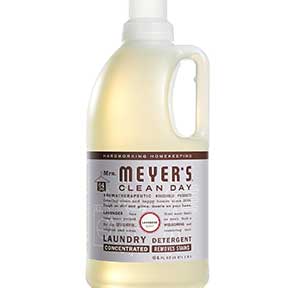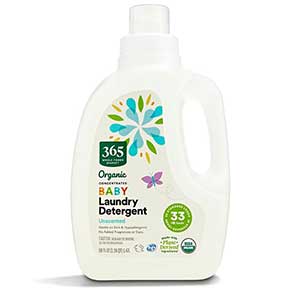Laundry 101: Part 7 – Tips for Washing Your Clothes

What Your Mom Didn’t Tell You about Washing Your Clothes
Clothes are not inexpensive and chances are you’ve invested a pretty penny on some items over the years. Knowing how to wash clothes is essential if you want them looking good each time you wear them.
If you’ve been known to grab clothes from the hamper and simply throw them into the washing machine without a second glance, then you may be making more work for yourself in the long run.
There’s more to laundry than just washing and drying clothes. Doing the laundry is about getting your clothes clean and that can be a lot harder than people assume.
Using the right detergents, correct water temperatures, checking labels, and removing stains, these and more can help prolong the life of your wardrobe, preserve colors, and keep the fabric looking like new.
Separate, Prepare and Pre-Treat Laundry
If you can get your laundry prepared for washing beforehand and assigning each item to a particular color pile, this can be a great time saver. Clothes should be separated by lights, darks, whites, and delicates/handwash. Whites and lights can most likely be combined to save time as long as the fabrics are similar.
We all know how important it is to separate whites from colors before throwing them into the wash, but did you also know that you should wash lint-making fabrics separately from fabrics that don’t create lint?
I’ve ruined (at least temporarily) clothing by washing it with new towels or blankets. My shirts and pants were completely covered in lint when they came out of the wash and it took a while to get rid of it completely.
If you can get a hamper with three to four compartments or use individual laundry baskets, you can sort your clothes right when you take them off.
- Whites – Underwear, t-shirts and socks that are washed in hot water
- Lights – Light colors like pastels that are washed in warm water
- Darks – Dark colors that are washed in cold water
- Hand wash – Delicate garments that need to be washed by hand or a delicate or handwash cycle
- Other – Set aside extremely soiled clothes to launder by themselves
Sorting as you take your clothes off each night will save time on laundry day and will prevent the above mentioned white socks from turning pink if they’re washed with a red t-shirt.
It’s also a good idea to get into the habit of reading the care labels on your clothes to make sure you’re washing them correctly.
Preparing Clothes Prior to Washing
Preparing your clothes prior to washing can prevent snagging, discoloration, stains from becoming permanent, and actually help your clothes get the cleanest they can be.
Set Aside Clothing That Needs to be Repaired
Set aside any garments that need to be repaired. A lose button can become a tear and so on.
Pull Sleeves and Pant Legs Out
Pull sleeves and pant legs out. In some cases you may need to turn some items inside out to help preserve embellished pieces or the design on a tshirt.
Some people also like to turn denim inside out to help the color from fading.
Button Buttons
Buttoning the buttons on your clothes before they go in the washing machine helps to keep the fabric from pulling and some buttons may snag other clothes.
Hook Bra Straps Together
Hook bras so they don’t hook and rip other delicate items. When washing delicate items, a lingerie or mesh bag can help keep them looking pretty for much longer. Labels may even recommend hand washing and laying flat to dry. I don’t put delicate items in the dryer, I lay flat to dry.
Zip Zippers
Zip up zippers prior to putting them in the wash as this will protect the teeth of the zipper and it will also protect the rest of the clothes in the wash since fabrics can snag easily on an open zipper. So zip up before putting anything in the washing machine.
Check Pockets
Check pockets prior to putting in the washing machine. I know I’ve left keys, change and rings in my pockets and these things can get out of the pockets and get stuck in the washing machine drum causing significant damage. Kids may leave chalk or color crayons in their pockets which can discolor and ruin other clothes in the wash.
Pre-Treat Stains
Pre-treat spots and stains.
Loading the Washing Machine
Whether you have a top loader or a front loader, it’s important – do not put too many clothes in the washing machine.
If there are too many clothes in the washing machine, they won’t get clean. Put just enough clothes in so you can still move them around with your hand. If your washing machine has settings for load size, choose the size that is appropriate for the amount of clothes you’ve put in.
Overloading the washing machine will reduce washing efficiency and cause fading and creasing and it can also cause excess wear on the washing machine itself.
Wash delicate items such as bras, hosiery and other lingerie in the “Delicates” or “Handwash” cycle with similar lightweight items.
When washing smaller, bulky items that do not fill the tub completely such as a throw rug, one or two pillows, or a couple stuffed toys add in a few towels for improved tumbling and spin performance.
When washing heavily soiled loads, it is very important to avoid overloading the washer to assure quality cleaning results.
What Water Temperature to Use When Washing Clothes
It’s important to use the water temperature specified for the type of laundry you are washing for optimal results.
Unless a detergent is specially formulated for cold water or the fabric label advises against it, a general rule is to always use warm water to wash clothing. Warm water helps to dissolve the detergent so it can get to work and clean your clothes.
Light clothing that will not fade should be washed on a hot or warm water temperature with a warm rinse cycle. Using a warm water rinse assists in keeping the colors bright and reduces dinginess.
Dark clothing should be washed in warm or cold water, (depending on the detergent you use). Cooler temperatures help to preserve the garments color and reduce fading.
- Hot/Cold – Whites and heavily soiled color-fast items
- Warm/Warm – Color-fast items.
- Warm/Cold – Moderately soiled color-fast items; most wrinkle free items
- Cold/Cold – Brightly colored, lightly soiled items; washable woolens
Washing Machine Fabric Settings
- Regular Wash – Combines a fast agitation with a fast spin cycle. Use for cotton, linens, towels, bedding.
- Hand Wash – Alternating periods of short and long soak and gentle spin speed. Use for items labeled hand wash.
- Delicate – Gentle agitation and gentle spin speed. Use for dress shirts/blouses, wool, nylons, sheer or lacy garments.
- Wrinkle Free – Reduced tumble pattern and spin speed to reduce wrinkling. Use for dress shirts/pants, wrinkle free clothing, poly/cotton blend clothing.
- Cotton Sturdy – Normal tumble pattern and high speed spin. Use for towels, jeans, sheets, linens, underwear, t-shirts.
Soil Level / Wash Options
- Heavy Soil – Use for cleaning heavily soiled loads.
- Normal Soil – Use for cleaning moderately soiled loads. This setting will be appropriate for most loads.
- Light Soil – Use for cleaning lightly soiled loads.
- Rinse – Choose this setting to rinse only and then spin.
- Spin – Spins only.
- Presoak – Adds 15 minutes of mostly soaking with minimal tumbling before the regular cycle. Can be selected with any cycle.
- Stain Cycle – Adds time to the wash and rinses for better stain removal. Automatically provides a fourth rinse.
- Extra Rinse – A fourth rinse at the end of the cycle to more completely remove laundry additives and perfumes.
- Max Extract – Use for jeans, towels, and bedding. Removes more water from loads during spin.
Add Detergent/Whitening Agents/Fabric Softener/Scent Booster
If you have a top loader, add detergent, whitening agents, fabric softener (for a more natural approach you can use vinegar or baking soda alone as a substitute for fabric softener) and scent boosters (if you choose to use them) according to the product instructions. Scent boosters are most often added directly to the wash tub. Essential oils can be used as well in place of store bought scent boosters.
If you have a front loader, you’ll also need to add these items according to the instructions, you’ll need to use a special type of detergent labeled “HE”. HE laundry detergent stands for high efficiency and doesn’t create as many suds. Too many suds can build up and the pressure can cause soapy water to leak from the door.
Laundry 101 Part 8 – Tips for Drying and Folding Laundry
Clothing and Laundry

















